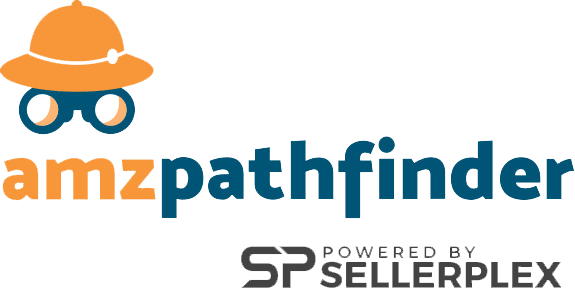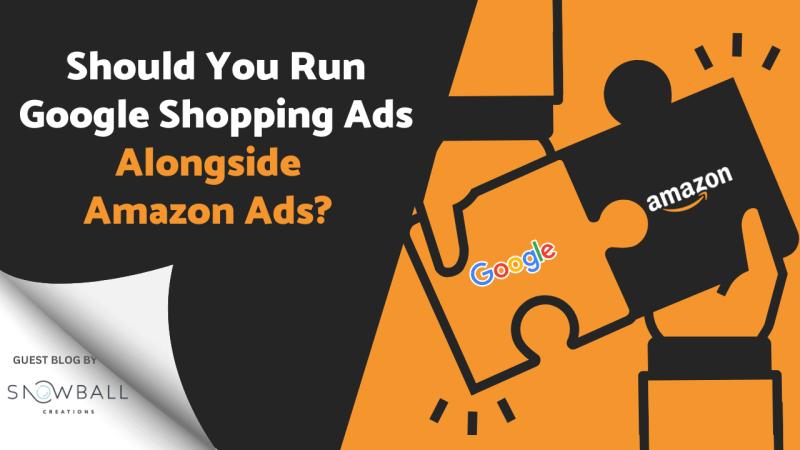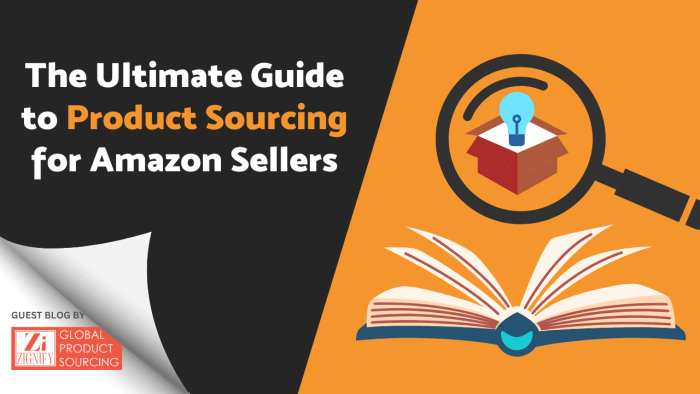Among the more rewarding habits of successful Amazon brand owners is their constant drive to find ways to boost sales and traffic for their brand. Understanding the mechanics behind the various levers you can pull in order to drive converting customers is key to business growth.
One foundational concept to understand in the realm of online advertising is Cost-Per-Click (CPC).
In this post, we’ll discuss what CPC is, how it works, the different types of Amazon ads that incur costs in a CPC fashion, how to understand your CPC costs, what factors drive CPC up (or down!), and how to improve your Amazon advertising costs.
Amazon CPC: Calculating & Improving Your Amazon Advertising Costs
What is CPC and how does it work on Amazon
First off, CPC is not a new concept and it’s not unique to Amazon. Its origins lie in online advertising models first invented by Google in the early 2000s. CPC is the amount that advertisers are willing to pay for a click on their ad. Why are we talking about ads? The concept is tied to a simple insight that there is valuable online real estate, like at the top of results on a search engine or product marketplace, and businesses will pay to be placed there.
The cost those businesses are willing to pay for each click is expressed as their CPC Bid. This bid is entered in an auction with other advertisers. The bidding auction is typically a second-price auction so that as the winner of the ad auction you pay only slightly more than the 2nd place bidder. This is why what you pay may be lower than what your max CPC bid is.
At its core, it’s a simple balance of supply and demand, and your CPC is set for each target such as a Keyword or ASIN that you are aiming to show up for when someone searches or browses.
The CPC mechanism is cost-effective given that advertisers will only pay for the clicks that their ads receive, increasing the chances of conversions without paying just for ad impressions. Advertisers have the ability to set bids and their daily PPC campaign budget, giving them full control over how much they’re spending.
What is ACPC?
You may sometimes hear references to ACPC (sometimes written as aCPC) which means something slightly different. The “A” stands for Average and is the average cost per click incurred across the timeframe you are examining. If you have a max CPC bid of .85 but many of your competitors are bidding anywhere between $0.70 and $1.00 the actual amount you end up paying will be on average lower than 0.85 as you only need to pay slightly more than other advertisers to beat them in the auction and you will be beaten by advertisers willing to bid more than you. If you are looking at a timeframe during which you’ve changed your Max CPC bid the math becomes a bit more complicated and your current ACPC may be higher or lower than your current Max CPC bid.
READ MORE: Try these 4 effective ways to win against your Amazon competitors with high reviews
What are the different ad types that use CPC on Amazon?
Since the launch of their marketplace advertising platform all of the major ad types under the Sponsored Ads family use CPC. In the intervening time, Amazon has introduced other bidding types but CPC is still a cost incursion method that the vast majority of ad spend flowing through Amazon uses every day.
-
Sponsored Product Ads
Sponsored Product Ads are the primary ad type most people are thinking of when they say “Amazon PPC” and are entirely CPC-based. In both manual and automatic targeting, advertisers set their desired Max CPC bid and are entered into the ad auction
-
Sponsored Brand Ads
Sponsored Brands are also exclusively CPC-based. The manner in which they display and their greatly increased capacity for creative sets them apart from Sponsored Products but the same underlying bidding structure remains unchanged.
-
Sponsored Display Ads
This is the primary campaign type that sees other bidding mechanisms in use besides just CPC. Since display ads are typically CPM-based Amazon’s own expression of this format can also be configured to incur costs in this way.
Targeting is a major component of Amazon Advertising. For this reason, many brands on Amazon need to set goals that revolve around their target audience. Sponsored Display Ads is a self-service display advertising solution that allows advertisers to target specific customers who have bought or searched for a product. Instead of keywords, Amazon determines and chooses the customers who fit the set targets. Then, advertisers set the maximum bid allowed for each click their ads get.
Another benefit of using this ad type is its placement options. Advertisers can place Sponsored Display Ads on and off Amazon’s eCommerce platform. These ads may appear on the Amazon home page, shopping results pages, product detail pages, Twitch, and third-party websites and apps in specific marketplaces.
How to calculate your CPC costs
Part of creating effective advertising campaigns includes calculating your CPC costs. Pulling in a few data points and using simple math you can forecast your ad costs.
Here’s an example of how you can create a traffic forecast:
Let’s say you have data to suggest a top keyword you wish to run ads against that has an ACPC of 0.87 . You’re willing to allocate $80 a day to a campaign targeting this search term. Knowing those two numbers you determine you could earn about 92 clicks for that keyword in a day if you spent your entire budget and shopper demand on the marketplace is there.
This is calculated using the following formula:
$80 Budget / $0.87 ACPC = 91.95 clicks
Simply put, you can earn 92 visits to your product from potential customers at the expected cost and budget you’ve allocated. You can see how playing with these variables will allow you to forecast what kind of traffic you can drive to your products.
The math to calculate your ACPC is even more simple
$80 Spent / 123 Clicks = $0.65 ACPC
An increase in impressions and attention from your potential customers relies on a higher number of clicks or visits to your ads. Since advertisers can place bids on popular keywords and ad placements on and off Amazon, the best CPC for every brand will depend on the ad’s ranking along with the ranking of other products and brands.
READ MORE: Learn how to effectively budget your Amazon PPC ad campaigns
What factors influence CPC?
The reality is that while we do have the final say on what we are willing to pay for a click with the CPC model, what we can earn for that click is something that is out of our control. CPC depends on and fluctuates with supply and demand, and what competitors in the auction are willing to pay. It is an ever-evolving dynamic situation that needs to be constantly monitored and tweaked.
Factors like seasonality, tentpole sales events like Prime Day, or high-demand holidays like Black Friday will all have a significant impact on what CPCs levels are like for their duration
Features inside of Amazon advertising itself can influence what CPC you are bidding too. The clearest example is the bid modification by placement feature which will increase your max CPC bid by a percentage based on the ad placement you are attempting to reach. This is used poorly or without a clear plan can have a massive impact on the amount you’ll pay per click and drive up costs rapidly.
How to determine if my CPC costs are too high
Determining the success of your PPC campaign depends on metrics such as your average CPC. Similar to most advertising metrics on Amazon advertising, CPC can become low, high, or just enough.
To remedy rising CPC costs, calculating the perfect bid is your best option.
Your average CPC is determined by dividing your total budget by your average CPC. This helps advertisers estimate how many clicks their CPC ads typically get on average.
Some of the basic rules of CPC costs are the following:
- The lower your CPC bid, the higher your ROI return on investment) is
- The higher your CPC bid, the more your chances of winning the ad position are
- The more popular the keywords are, the higher the cost per click would be
- The CPC metric coincides with your Conversion Rate (CVR) which determines whether your CPC is spend-worthy
Here is an example to better understand the nature of CPC costs:
If you’re running a PPC ad that has a CPC that costs $0.95 per click and you received 200 clicks and 20 sales, your CVR will then be 10% and you would have paid $190 for the 200 clicks you’ve received.
Let’s say your product costs as low as $4 each.
You will have made $80 from your 20 sales while spending $190 on your ads.
But if your products cost higher, ($40 for example), then you will have received $800 from your 20 sales with an ad spend of $190.
The example above shows that CPC costs fluctuate depending on your ad spend, the cost of your products, and the number of clicks your CPC ads get.
How to improve your Amazon Advertising costs
Succeeding in your PPC campaigns doesn’t only depend on the amount you bid and the images you’ve used to attract potential customers into clicking them. It also pays to have a solid game plan that ensures you meet your targets without extra cost.
Improving your Amazon Advertising costs is possible through the following strategies:
-
Structure your ad campaigns
Structuring your PPC ad campaigns is imperative to make sure every ad group and campaign is organized. Ideally, it would be best to have separate campaigns for every primary product category. Then, inside each campaign, create specific ad groups.
Here’s an example to show you how that would work:
Let’s say your brand sells women’s luxury beauty and you want to create ad campaigns for your top-performing products in the following categories: Women’s Hair Care, Women’s Skin Care, Women’s Fragrance, and Women’s Makeup.
For each campaign, you can create individual ad groups that will separate every sub-category.
Campaign 1 for Women’s Fragrance could have the following ad groups:
Women’s Body Sprays
Women’s Cologne
Women’s Eau de Parfum
Women’s Eau de Toilette
Each of these ad groups should make use of specific keywords that will then be used for their individual advertisements. Doing this will keep your ads relevant and related, making it easier to increase ROI.
-
Source the right keywords
Finding the right keywords is a big part of what makes an effective ad. But it shouldn’t just be any keywords that you’ve thought of at the top of your head. The best keywords for creating ads that convert are those that are relevant, used by competitors, and describe your products correctly. When you take relevant keywords into consideration, your efforts will yield more sales and attract more potential customers who are using the same keywords to look for specific products.
Conducting keyword research on your own can help you discover new keywords as well as upward and downward keyword trends. Using keywords used by competitors also helps in a way that some of them who are versed with Amazon keyword advertising may have optimized their listing titles and content, gearing them towards driving traffic and sales.
-
Create precise and marketable ads
Ads not only need to be able to visually attract and capture attention, but they also need to be precise and straightforward. To comply with this, your ad’s text should be rid of any errors, accurately represent your products, be appealing and creative, and should match any offers that you’re currently running with your ads.
Use our PPC Optimization Checklist as your guide in creating the perfect PPC campaigns.
-
Optimize your Amazon listing
A big part of improving your Amazon listing is by improving your brand’s SEO and listing content quality. SEO is not just about boosting website ranking and increasing blog traffic. Amazon uses SEO for the benefit of advertising, optimizing search, targeting keywords, improving a brand’s click-through rate (CTR), and enhancing product listings.
The key to creating great copy for your Amazon listings is by making your descriptions informative, relevant, accurate, and factual. It’s best to highlight its features in bullet points to give them more emphasis.
Overall, it is highly recommended that you use high-quality images, write engaging copy, and improve everything your customer can see from your Amazon Store to your brand’s individual listings.
-
Estimate your PPC costs
Before you begin creating your PPC ad campaigns, another metric you need to take into account is your Advertising Cost of Sale (ACoS). This metric influences your cost-per-click (CPC) bid and campaign budgets directly. Knowing your ACoS can help you get a better understanding of your realistic campaign budget.
ACoS is calculated using factors such as the cost of the product sold, your product’s selling price, costs for Fulfillment by Amazon (FBA) (if applicable), and other miscellaneous costs.
You can calculate your ACoS by subtracting your expenses (cost of products, FBA fees, and miscellaneous costs) from your product’s selling price.
Once you’ve computed your ACoS, the remaining amount will pertain to how much you can spend on your ad campaigns to earn sales that you can still profit from.
READ MORE: The 5 Most Powerful Tools We Use for PPC Advertising
-
Try automatic targeting
Automatic targeting is a must-try technique, especially for first-timers in Amazon Advertising. It takes time for newbie Amazon sellers to learn the processes, terms, and techniques within Amazon Advertising during their first few times of exploring. Oftentimes, it can even get overwhelming especially if they’re starting from scratch without an expert to guide them.
To make things less daunting, you can use auto-targeting campaigns which are available for Headline Search Ads (ads that appear above search results as banner ads; usually promotes up to 3 products) and Sponsored Products. Similar to your goal of searching for keywords that convert, Amazon will recommend keyword data that have been gathered for two weeks.
READ MORE: How can you maximize visibility with Amazon backend keywords?
-
Make use of tools for campaign optimization
Another skill that you need to learn in order to launch a successful PPC campaign is knowing and understanding tools that can be used for PPC optimization. Among the tools many Amazon advertisers use these days include Helium 10, Ampd.io, Amazon Marketing Cloud (AMC), Intentwise, and many others.
But why spend the time learning about tools when you can ask the help of a team of seasoned Amazon PPC experts? Our Amazon advertising professionals know the ins and out of PPC advertising from determining the goals you can achieve to implementing and managing Amazon PPC campaigns for your brand.
Helpful Links
✋➝ Amazon Advertising Management (PPC, DSP)
🗨️➝ Follow us on LinkedIn
📧➝ Subscribe to our newsletter
🛍️➝ We Design Amazon Stores
🔎➝ Amazon Advertising Audits
▶️➝ Subscribe to our YouTube channel















